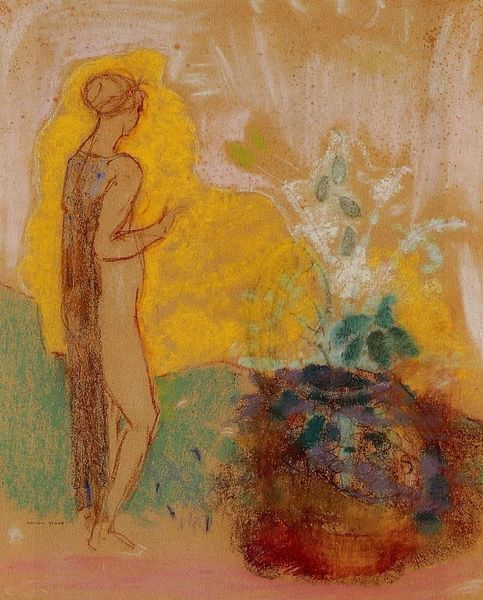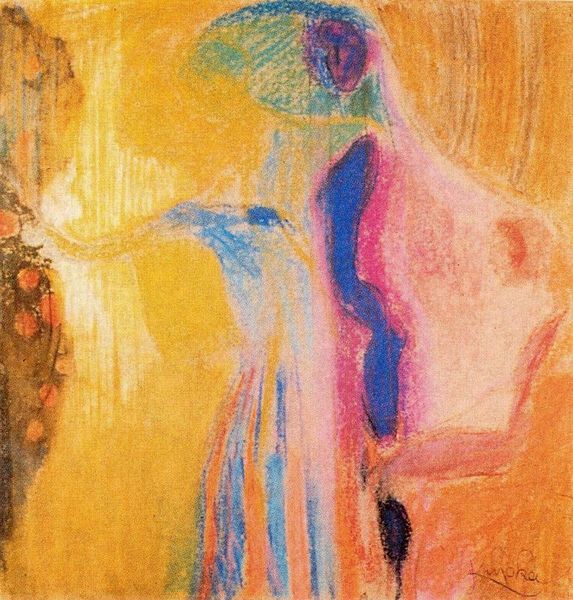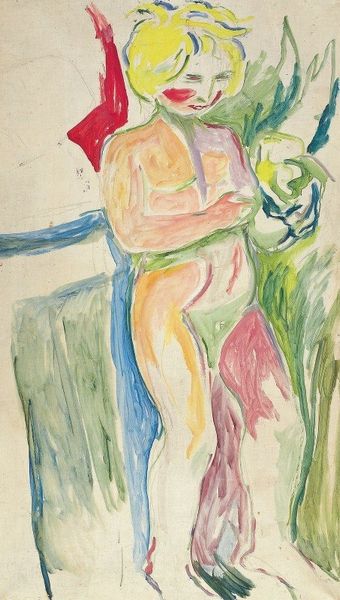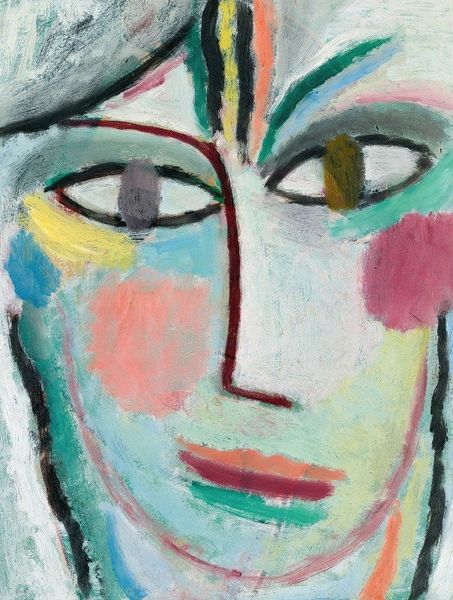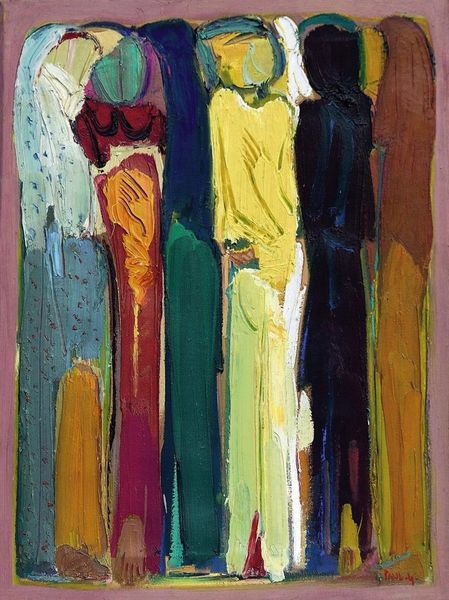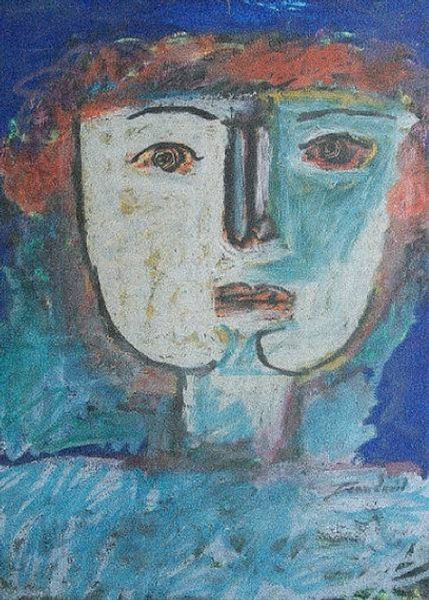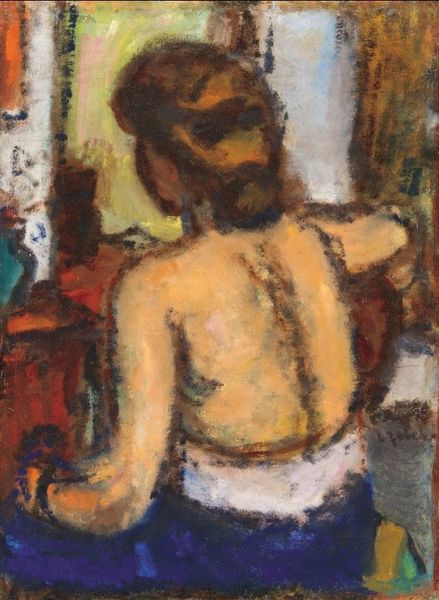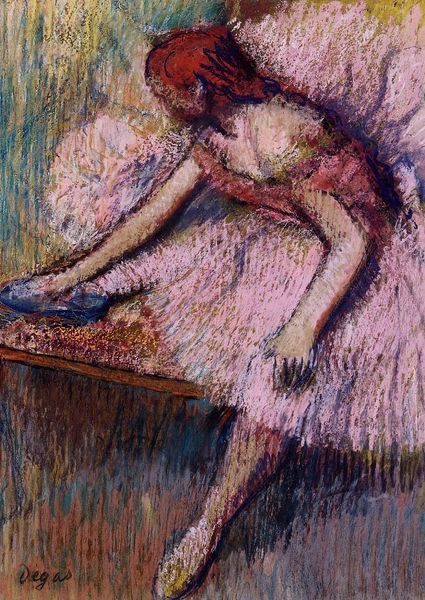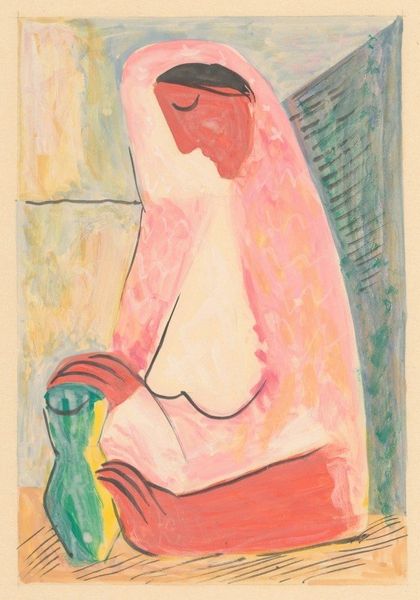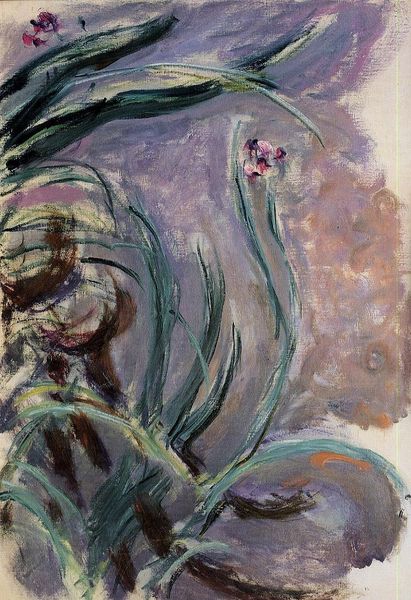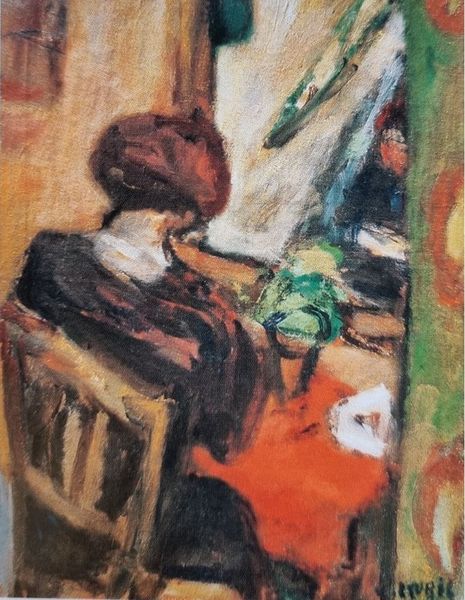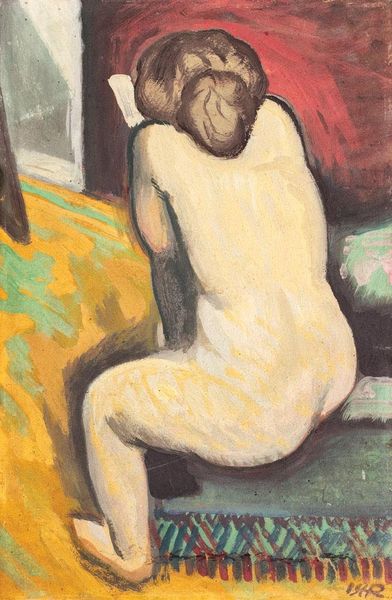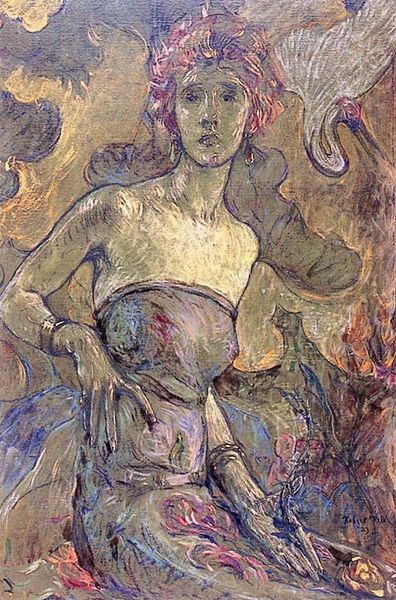
Copyright: Ilka Gedo,Fair Use
Editor: This is Ilka Gedo's "Self-Portrait with a Strawhat" from 1984. It appears to be made using mixed media on paper. I find its expressive lines and somewhat fractured composition really striking, but also a little unsettling. How do you interpret this work, looking at it through a historical lens? Curator: Well, let's consider the socio-political context of 1984. Gedo was working in a divided Germany. Her expressionistic style, and this piece specifically, becomes incredibly charged. What might a 'self-portrait' mean within a society grappling with identity and division? Editor: That makes me think about how self-representation is always shaped by external forces. Is this figure fragmented because her identity feels fragmented? Curator: Precisely! The "straw hat" is a reference to classic portraiture. But Gedo twists the conventions, deconstructing the ideal self. What about the composition grabs you the most? Editor: The juxtaposition of bold colors and delicate lines. It's almost as if she’s building up, and simultaneously tearing down, her own image. Curator: That tension reflects a larger societal conflict too. In what ways can you read it as a critical comment of the institutionalisation of art and representation? Editor: Hmm... Maybe she's challenging the notion of a singular, easily digestible narrative – in art and life. By breaking the mold, she creates her own language, so to say? Curator: Absolutely. And that act of self-definition, or re-definition, is deeply powerful when considering the constraints and expectations put upon artists, especially women artists, in the latter half of the 20th century. Editor: This has made me realize how a "self-portrait" can be much more than just a personal reflection; it’s a statement within a much larger social and cultural conversation. Curator: Exactly, and seeing it this way shifts how we see art’s public role.
Comments
No comments
Be the first to comment and join the conversation on the ultimate creative platform.
